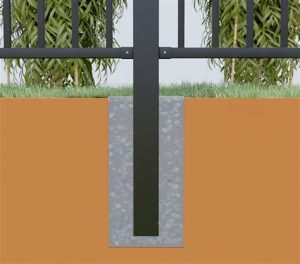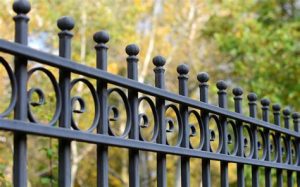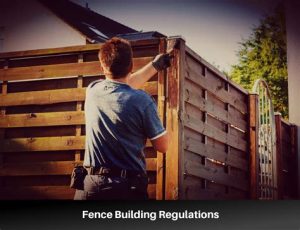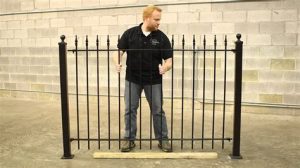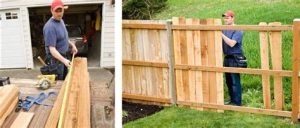Learn how to prepare for your project by gathering tools, measuring accurately, calculating materials, considering obstacles, and accounting for gate placement.Installing a fence can transform your outdoor space and enhance your property’s security, but before you dive into the project, precise measurement is essential. Knowing how to accurately measure your yard ensures that you order the right amount of materials and avoid costly mistakes. In this guide, we will walk you through the important steps to measure your yard effectively for fence installation. From gathering the necessary tools to taking precise measurements, accounting for obstacles, and determining gate placement, we’ve got you covered. Whether it’s a small garden or a sprawling estate, understanding how to measure your yard correctly will set the foundation for a successful fencing project. Let’s get started on giving your property the boundary it deserves!
Gathering the necessary tools
Before you embark on the exciting journey of fence installation in your yard, it’s essential to start by gathering the necessary tools. Having the right tools at your disposal will make the entire process smoother and more efficient.
- Measuring Tape: A long measuring tape is vital for accurate measurements.
- Post Hole Digger: This tool will help you create holes for your fence posts.
- Level: A level ensures your fence is straight and properly aligned.
- Hammer: A hammer is necessary for driving in any stakes or nails.
- Saw: Depending on your chosen material, a saw may be needed to cut wood or metal to size.
- Safety Gear: Don’t forget your gloves and goggles to protect yourself while working.
It may seem simple, but having these tools on hand can significantly impact the efficiency and outcome of your project. By preparing adequately with the right equipment, you can avoid interruptions and stay focused on the task at hand.
Once you have gathered all the necessary tools, you’ll be ready to move on to the next important step: taking accurate measurements. Each step you take will contribute to the success of your fence installation, so make sure not to skip any!
Remember, the right tools can make a world of difference in ensuring that your fence is installed correctly and lasts for years to come.
Taking accurate measurements
When it comes to installing a fence, taking accurate measurements is crucial for ensuring both functionality and aesthetics. An incorrectly measured yard can lead to a variety of issues, including overestimating costs or even running into property line disputes. Below are some steps to assist you in achieving precise measurements.
- Use the Right Tools: A measuring tape, level, and possibly a stake are essential for marking your boundaries accurately.
- Measure at Multiple Points: Don’t rely on a single measurement—check at least two spots to account for any irregularities in the land.
- Mark Your Corners: Use stakes or markers at each corner of your fence line to provide a visual reference as you take measurements.
It’s important to stay consistent with your measurement units, whether you choose to work in feet or meters. Switching between units can lead to confusion and mistakes. Additionally, ensure you’re measuring the area where your fence will be installed, as some regions may have undulations that require special considerations.
Accuracy breeds confidence; this is especially true when it comes to fence installation. – Anonymous
Finally, after you’ve taken all necessary measurements, double-check them for accuracy. It might help to have a friend or family member assist you, as a second pair of eyes can catch any mistakes you might have overlooked. With careful planning and methodical measuring, you’re on your way to a successful fence installation.
Calculating materials needed
Once you’ve taken accurate measurements of your yard, the next crucial step is calculating the materials needed for your fence installation. This involves understanding the dimensions of your fence, including the total length and height, as well as what materials will be required for a sturdy build.
To perform your calculations, start with the total linear footage of the area where you plan to install the fence. Measure along the perimeter and account for any corners or curves.
| Section | Length (feet) | Material Type |
|---|---|---|
| Side 1 | 50 | Wood |
| Side 2 | 30 | Vinyl |
| Side 3 | 50 | Wood |
| Gate | 4 | Wood |
After determining the total lengths for each section, calculate how many panels and posts you will need. Most fence panels come with specifications detailing how many panels are required for different lengths. Be sure to factor in gates and any additional materials, like cement for securing posts or decorative caps. This meticulous planning ensures that you order enough materials without over-purchasing, streamlining your project and aiding in accurate budgeting.
Considering any obstacles
When preparing for a fence installation, it is crucial to take into account any obstacles that may interfere with your plans. These can include natural features, existing structures, and even local regulations. Identifying these obstacles early can save you a lot of time, effort, and money later on.
Start by surveying your yard for potential obstacles such as trees, large rocks, utility lines, or uneven terrain. For example, if you have a large tree near your desired fence line, you should consider the distance from the trunk to avoid damage to the tree’s root system or issues with leaning branches.
Additionally, check for any local regulations or HOA rules that could impact your fence placement. Some areas may require you to keep a certain distance from property lines or may have restrictions on the types of materials you can use. Being informed about these obstacles will help you design a fence plan that complies with all necessary guidelines.
Accounting for gate placement
When planning to install a fence, it’s crucial to carefully consider gate placement as it affects both functionality and aesthetics. A gate is not merely a passage; it serves as a focal point in your yard and plays a significant role in how you interact with your outdoor space. Ensuring the correct placement of the gate can enhance accessibility and provide ease of use.
- Traffic Flow: Identify the natural flow of foot and vehicle traffic in your yard. The gate should be positioned where it makes sense for users to enter and exit.
- Accessibility: Ensure that the gate is easily accessible from both inside and outside the fence. Consider the placement of pathways or driveways that lead to the gate.
- Size of the Gate: Make certain that the gate is wide enough for any vehicles or equipment that may need to pass through. Measure accordingly to avoid issues later on.
- Security Concerns: Position the gate in a way that does not compromise the security of your yard. Ensure that it is visible from your home for safety reasons.
In conclusion, taking the time to thoughtfully plan your gate placement will save you from potential headaches down the line. A well-positioned gate ensures convenience and security, making your fence not just a boundary but a valuable part of your outdoor living experience.
Frequently Asked Questions
What tools do I need to measure my yard for fence installation?
To measure your yard for fence installation, you will need a measuring tape, stakes or markers to outline the area, a level for checking ground evenness, and possibly a notepad or a digital device to record your measurements.
How do I determine the layout for my fence?
To determine the layout for your fence, first decide on the type and style of fence you want, then consider the boundary lines of your property. Use stakes to mark the corners and line of the fence to create a visual roadmap.
Why is it important to check property lines before measuring?
Checking property lines is crucial to ensure that your fence is placed within your own property boundaries and to avoid potential disputes with neighbors, as well as to comply with local zoning laws.
What is the best way to measure uneven terrain?
For uneven terrain, use the measuring tape to measure the distances along the ground, following the natural contours. Take multiple measurements to account for changes in elevation and ensure accurate planning.
How can I calculate the total linear feet needed for my fence?
To calculate the total linear feet of fencing required, add together the lengths of all sides of your fence layout. Make sure to include any gates or additional sections in your calculations.
Should I measure for fence posts, and if so, how?
Yes, you should measure for fence posts. Typically, they need to be placed every 6 to 8 feet along the perimeter. Measure the total length of the fence and divide by the spacing you choose to determine the number of posts needed.
What additional factors should I consider when measuring for a fence?
When measuring for a fence, consider factors such as local regulations, slope of the land, accessibility for installation, ground type (rocky, sandy, etc.), and the type of fence you want to install.
